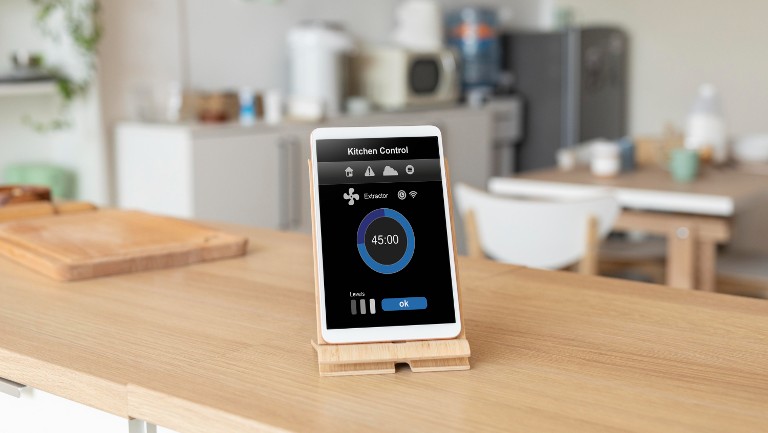Internet
Mobile
Support
Refer a friend
Student voucher
Moving to Malta
Securing your home network: A beginner guide
31 January 2024

From your computer and smartphone to your tablet and smart TV, your home network helps connect these to each other and the internet itself. And while it makes your life easier, it can also expose you to some risks. Hackers, malware and other cyber threats can try to access your network and your devices, stealing your personal information, slowing down your internet speed or even taking control of your devices. This is why securing your home network is as essential as locking your front door.
So read on to discover the basics of network security and explore some simple steps you can take to secure yours.
Understanding your home network
Your home network is like a digital version of your home. Just like your house has doors and windows, your network has points of access, such as your Wi-Fi router, which in turn connects various devices, be it your laptop, TV or smart fridge.
Think of your friend Sarah, who recently bought a smart doorbell. This is connected to her home network, allowing her to see who’s at the door, even when she’s not home.
What is home network security?
Home network security is all about making sure your network is safe from unwanted visitors and it involves creating a secure infrastructure for your devices, applications, users and data so that they work safely.
Here are some simple examples of how network security can help you:
- It can protect your personal information, such as your emails, bank accounts, passwords and photos from hackers and identity thieves.
- It can prevent malware, such as viruses, ransomware, spyware and worms from infecting your devices and damaging your files or system.
- It can enhance your internet performance by avoiding unwanted traffic, spam or ads that can slow down your connection or consume your bandwidth.
- It can improve your user experience by accessing the latest features, updates and improvements for your devices and applications.
How to secure your home network
Before diving into a range of security enhancements, you must first assess where you stand, starting off by checking your network’s existing security settings. Most routers have a settings page where you can review your current security measures, so take a look there – you might be surprised to find out that your network is as open as a 24-hour convenience store.
If things are not looking good, follow these simple steps:
Secure your wireless router
Your router is the gateway to your digital domain. One of the easiest ways to secure your home network is to change the default passwords and usernames that come with your devices, especially your wireless router and access point. These default credentials are often easy to guess or find online, and they can give hackers access to your network and your settings. Just make sure you change these into something unique and strong, using a combination of letters, numbers and symbols. Remember how John’s Wi-Fi was hacked because his password was “password”? Avoid following suit at all costs.
Next, ensure your router’s firmware is up to date, just like you regularly update your phone’s operating system. One more thing you should do is disable Wi-Fi Protected Setup or WPS for a tighter security seal. If you’re new to this tech jargon, WPS is a wireless network security standard that allows connections between a router and wireless devices. While convenient, wireless networks with WPS enabled are vulnerable to cybersecurity threats.
Set up a guest network
Your guests don’t need access to your entire house, right? Same goes for your network. A guest network allows visitors to connect without risking your main network’s security since it creates a distinct, separate Wi-Fi access for your visitors. This means that your main network, which you use for more sensitive tasks like online banking or accessing personal emails, remains isolated and less exposed. It can also act as a buffer zone that shields your personal devices from potential digital contagions so that if your guest’s device is unknowingly infected with malware or a virus, it reduces the risk of this spreading to your own devices. What’s more, you can set different security settings and access privileges on a guest network. For instance, you might limit the bandwidth available or block access to certain websites. And if you suspect any security issues, it’s easier to reset or change the password of a guest network without disrupting your main network.
Use network firewalls and antivirus software
Firewalls act like your home’s security system, monitoring incoming and outgoing traffic and acting as a barrier between your network and the internet. This is why it can help prevent hackers, malware and other unwanted visitors from accessing your network or your devices.
If you already have one, check that your firewall is active. Most routers and operating systems have a built-in firewall that you can turn on or off and some allow you to customise the settings and rules. Additionally, you can also install a separate firewall device or software for extra protection.
Update your software regularly
Another important step to secure your home network is to update your software regularly. Software updates are modifications made to software to fix bugs, enhance security, add new features or improve performance. But they can also help to protect your network and your devices from new vulnerabilities, threats or issues that are discovered by the developers or the users. These updates can apply to your router, your operating system, your applications or your devices so you should always install the latest updates as soon as they are available. Otherwise, enable the automatic update option if possible.
Implement best practices
- Change your passwords regularly: make it a routine, like replacing the batteries in your smoke detector and make sure that you come up with unique, strong passwords each time. Alternatively, consider using a password manager.
- Educate family members: if you live with others, you need to ensure that all members of your household are aware of basic cybersecurity practices and to be aware of digital pitfalls like phishing scams. Take a look at what phishing, malware and viruses are and how to avoid them. Concerned about your little ones? Go through these tips.
- Use a VPN (Virtual Private Network): a VPN encrypts your internet traffic, protecting your data from intruders. This means that your online activities remain your own, shielding your internet traffic from prying eyes, like those of hackers, marketers or even your internet service provider. Subscribe to a reputable VPN service and install their app on your devices.
- Monitor network activity: keep a vigilant eye on your network’s well-being with network monitoring tools which can scan for unwanted digital intruders or performance hiccups. You can also check your network with your router’s app or interface to check for unusual activity or devices which are connected.
- Disable remote management: remote management, also known as remote administration, is a feature that allows you to access and manage your router’s settings from outside your home network. It’s certainly a handy feature, but when enabled, your router is accessible via the internet, which means that anyone who knows (or can guess) your router’s IP address and login credentials has a potential entry point into your network.
- Power off devices when not in use: every device connected to your network is a potential entry point for cyber threats. By turning off a device when not in use, you are reducing the time window in which it can be attacked. And while not directly a security benefit, turning off devices when not in use saves energy and can reduce your electricity bills, a practice that also extends the life of your devices, ensuring they serve you well for longer.
Securing your home network is not only a smart move, but also a necessary one. By following these simple steps, you can improve your network security and enjoy a safer and better online experience. Just remember, network security is not a one-time thing, but an ongoing process.
Looking to expand your online security knowledge? Here are some tips on how to avoid online shopping scams, as well as phone and email scams, while take a look at the steps you need to take to keep your personal data safe.

